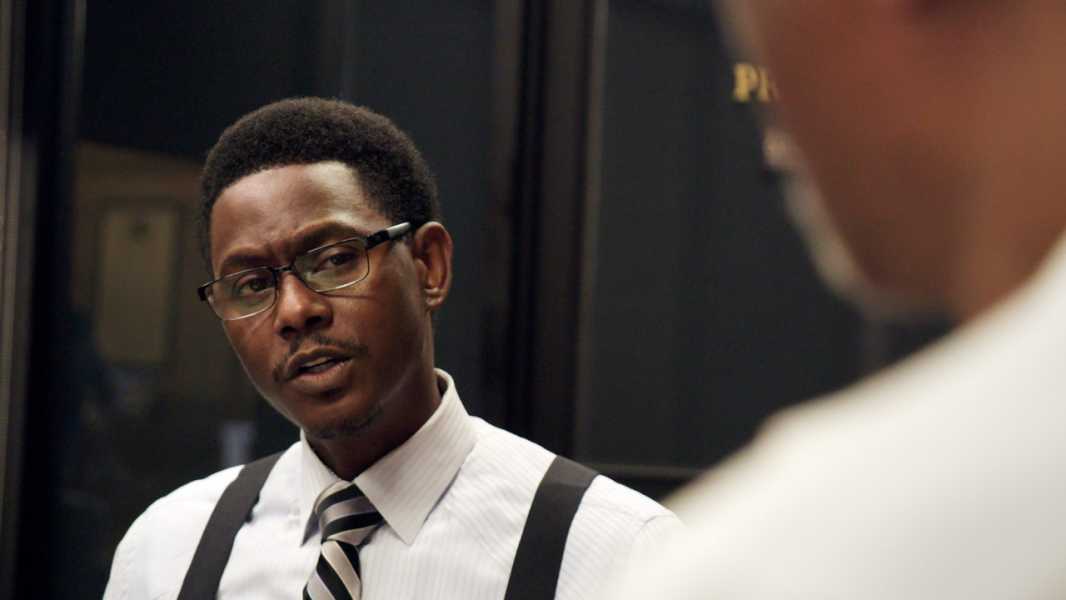
Save this storySave this storySave this storySave this story
Arlo Washington peers out the car window as he drives through the capital of Arkansas. He wears a royal-blue polo; his Afro is close-cropped. With soft, alert eyes, he surveys the city, glancing from building to building as though he’s looking for something he can’t quite find. One of the locations he passes is Little Rock Central High School, the same institution that Dwight Eisenhower had to send federal troops to in 1957, when the state’s governor and a roiling mob tried to stop nine Black students from integrating the school. The opening scenes of “The Barber of Little Rock” show Washington moving through his home town while his voice-over describes the issue he’s dedicated his life to: “Economic justice is actually having an opportunity—a real opportunity.”
John Hoffman and Christine Turner, the film’s directors, told me via e-mail that, when they started work on the project, they knew they wanted to focus on the racial wealth gap. Through Mehrsa Baradaran’s book “The Color of Money”—which examines the ways in which segregation and Jim Crow laws negatively impacted, and continue to negatively impact, Black communities—they learned about community-development financial institutions, which strive to create economic growth in underserved communities. “We thought if we could embed in one of these places, we would be able to witness the effects of racial economic inequality first-hand and those everyday, on-the-ground people committed to narrowing it.” Enter Arlo Washington. “Here was a guy running a nonprofit loan fund out of a converted shipping container in the parking lot of his barber college,” they wrote. In 2008, Washington started his Washington Barber College, an institution that has to date helped fifteen hundred licensed barbers. Later, in 2014, he founded People Trust, a nonprofit fund for those who struggle to get loans from traditional banks. The organization offers loans for, among other things, medical emergencies, sudden job loss, rental assistance, rapid rehousing, and for people trying to start their own small businesses. Its Web site provides resources on financial education, and includes a link to an emergency-savings guide for children.
The New Yorker Documentary
View the latest or submit your own film.

The film follows Washington as he teaches sessions at his barber school and speaks with people applying for loans at People Trust. He meets a middle-aged man who has never lived on his own before, and talks with him about how to create a budget. In another scene, a woman shares why she’s having trouble finding a job: “It’s hard because I don’t have nowhere to shower.” One woman explains to a People Trust employee that she has sickle cell, a pacemaker, and a mass in her breast for which she has to receive weekly treatment. The worker asks, “And then you still run three businesses?” “Yes, Ma’am,” the lady replies. Throughout the documentary, you get a sense not only of the immense hardships that the community members face but also of their resolve, their personality, their creativity.
The directors filmed for a full year, shooting more than four hundred hours of footage. “It’s a leap of faith every time you enter people’s lives with a camera,” they told me. “We don’t begin shooting unless and until we’ve established clear trust.” That trust did grow over time, to the point that barber-college students and staff, and People Trust workers and loan recipients, agreed to formal interviews. These segments punctuate “The Barber of Little Rock.” Hoffman and Turner used the same camera and lighting techniques that they’d use for “expert interviews” when filming these. The result shows the subjects in a respectful and dignified light—not always the case when people are asked to describe financial challenges. “That was the point of this particular filming exercise, gather expert opinions on the racial wealth gap from those living it,” Hoffman and Turner wrote. The interviewees appear against a gray-brown backdrop, under lighting that’s both crisp and warm. “What do you think and feel when you hear the word ‘ownership’?” a voice asks just off-camera, in one of the interview sections. “Nobody in my family owned anything,” one man responds. A woman, hearing the same question, answers similarly. “Of course nothing was passed down to me. And I don’t have anything to pass down to them,” she says, referring to her children. “Do you believe in the American Dream?” the interviewer asks yet another woman, later in the film. While she gives her answer, she laughs. It’s not hard to see why.
The integration of Little Rock schools happened less than a century ago; the Black children at the center of it, now in their eighties, faced swarms of vicious segregationists, and had acid thrown at them; one recalls suffering ulcers by the time she was in ninth grade. In the fifties and sixties, the city pushed Black residents to the east and south portions of Little Rock under the guise of “urban renewal.” Lenders, in a practice known as redlining, refused to offer mortgages to Black families in white areas, further confining them to poorer parts of the city with worse-funded schools and less access to basic necessities. According to the Little Rock Public Radio, “in terms of geographical separation, Little Rock’s neighborhoods are more segregated today than they were seventy years ago.” Washington points out the evidence as he drives the film crew through what he calls the “heart of the Black community.” “There are no banks over here,” he notes, emphasizing that thirty thousand people live in the area. “We got four, five boarded-up houses on this little half a block,” he points out. Then they cross I-630 and approach the Heights—the wealthier and whiter part of the city. “Eight thousand in population, but you got fourteen banks,” Washington says. “And you don’t see a boarded-up house. Not one.”
People Trust, the credit union that Washington opened, is the only bank serving a redlined neighborhood where it operates, and the first Black-owned bank in the state of Arkansas. Turner calls Washington’s establishment of the bank “an act of resistance.” A main focus of the film is on similar acts of resistance—not only the hardships and injustices that Black people in Little Rock have faced but the ways they push back and insist on succeeding in spite of them. Toward the end of the film, we see Lyncola—a woman we met earlier on at People Trust, as she spoke about her goal of running a salon—grinning, radiant in her graduation gown, holding a Barber College diploma. In some of the documentary’s final scenes, we see a man who received a fifty-thousand-dollar loan to start an auto shop, setting up his new facility, readying it for the business that he can finally call his own.
Sourse: newyorker.com